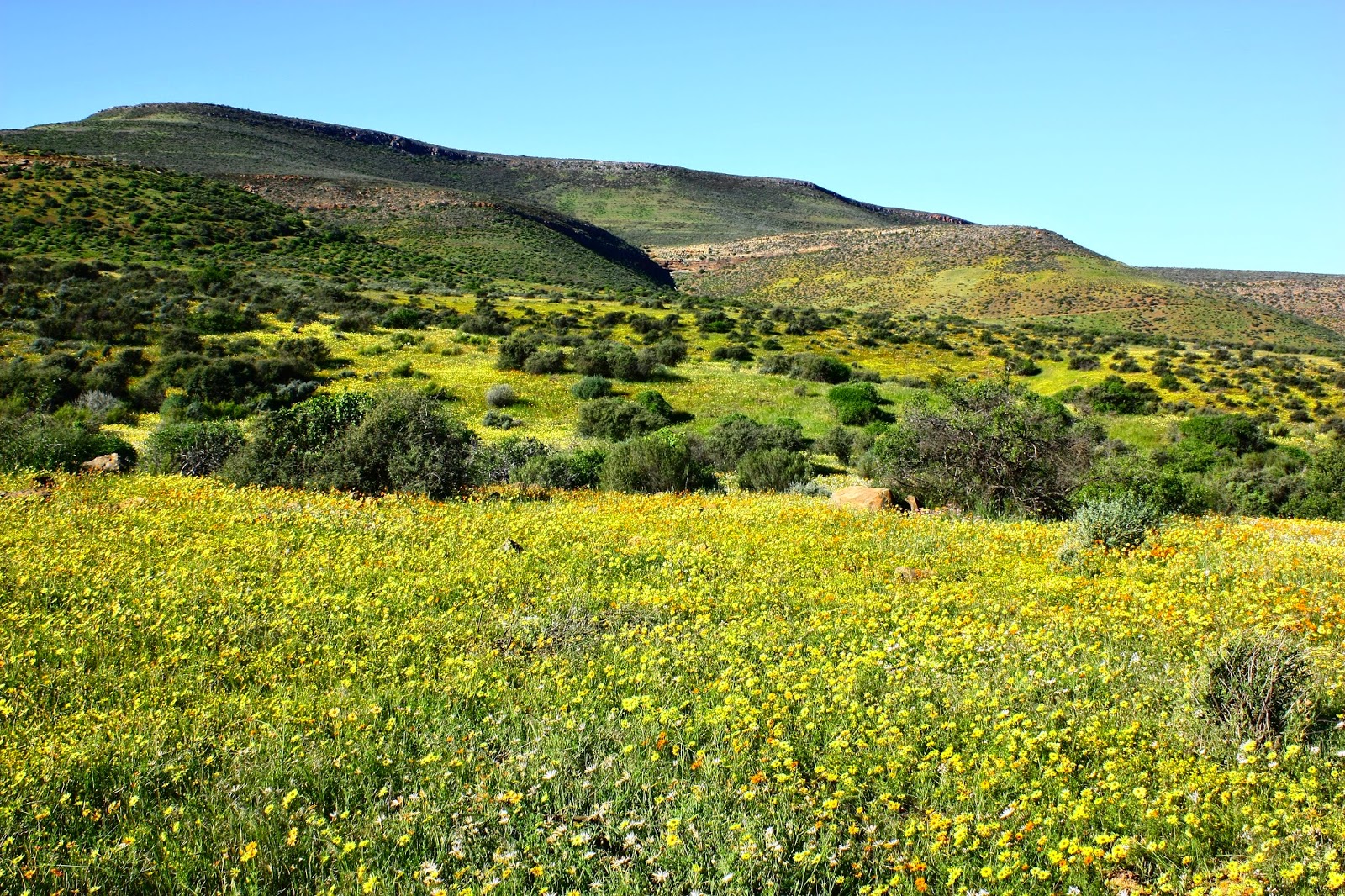This is the beginning of a 10 day trip into the Northern part of South Africa. This is the place where Afrikaners fled to when Britain decreed that all slaves would become free people in 1830. The Afrikaners refer to this mass-movement as the Great Migration. Essentially thousands of black slaves carried Dutch settlers' stuff out into a narrowly hospitable climate (to be generous).
Our adventure was quiet at first as we needed to travel 950 km to our first campsite. The final 48 km took longer than the first 250 km to put the remoteness of our exploration in perspective.
The single best event of the trip occurred when setting up camp after driving for 12 hours with the final 2.5 hours being the 48 km through a rugged two-track. Needless to say we were tired, cranky, and hungry. Accomplishing tasks such as putting up a tent, starting a fire, and preparing food in this sort of atmosphere is something that Jennifer and I do way too much on vacation. Needless to say the situation was rife for disaster.
As Jennifer and I were trying to set up the tent we realized there was a layer of rock that would prevent our spikes from reaching far enough into the ground. Considering the brisk wind that was blowing this meant we would likely lose our tent unless we found a new location. So, I explored for a more suitable spot and found a good one (in my opinion, but not Jennifer's) about 10 meters away. While I was searching for a new spot and sticking my spike into the ground, Jennifer was holding onto the tent to keep it from blowing away.
After finding my spot I thought it best to stand still while Jennifer carry the tent over--bad mistake. Fatefully, the wind picked up and pulled the tent out of Jennifer's hands as she started to move towards the less-than-ideal new spot. As the tent carried a few feet into the air, it moved just outside of Jennifer's grasp and began to tumble towards the rock field that ran next to the river (tent location and river indicated in pictures below). The boulders that occupied the area within 50 meters or so of the river were large, sometimes sharp, and essentially not navigable at fast speeds.
Jennifer was wearing two-strap sandals, so she took off after the tent. I was barefoot, but quickly decided that should the tent be faster than Jennifer I would be best served downstream if the tent managed to lodge itself in the river. I took off downstream to cross the rock field in a different place where the river narrowed to a deep section next to a protruding and tall rock that I could use as a spotting location.
As I was working my way, not so quickly, across the rocks I could hear Jennifer begin to move into histerics. Some crying, some shouting, general exasperation. I just remember shouting to be careful crossing the rocks as I didn't want her to get her ankle twisted or hurt herself in a mad fury to reach the tent.
When I arrived at the river's edge I was in position to talk to Jennifer so I called up stream, "Did the tent go in the river?", then "Yes". "Did it sink", then "Yes". "Can you see it", then "No, it hit and sank and went away and now its gone, I can't see it!"
So, I waited for a brief moment on my rock, thinking that the tent may be deep in the water as the river looked like it could be 20+ feet deep in the section below my post. However, in a few seconds I could see the ghostly shape of the tent under the water--mostly thanks to the orange pieces. As it was 30 minutes past sunset and we were still discussing the likelihood of the river having crocodiles (forgot to ask at reception 2.5 hours before) it was quite a scary moment for me. But, to lose the tent when it was clearly within grasp would have been inexcusable.
Upon jumping into the fast-moving and deep current, I found that moving the tent was much like trying to pick up 500 pounds, or move a hot-air balloon around with a rope on a windy day. It was essentially impossible to move and pulling itself deeper into the water with the current. To solve this problem, I pulled myself under water with the tent and began taking it apart to reduce its drag. A sheet underwater will produce very little drag, so holding my breath for a few seconds I packed the tent down and began to swim it towards the surface/shore. Thankfully, I was able to get myself into a counter-current eddy that formed below my big rock outcropping and the current actually pushed me back up against the rocks. Tent saved! Adventure had!
The climate was so hot and dry that even without the sun the tent dried in a matter of minutes. Following this episode we had lots of laughs and decided to keep heavy rocks in the tent at all times.
The rest of the trip was not as interesting, thank goodness, but we did have good fun exploring the desert wilderness.
 |
| The rolling, smooth hills are formed by gneiss intrusions--a form of granite that penetrated into the crust of the African and South American crustal plates as they separated ~130 million years ago. |
 |
| This is not the dirt 2-track mentioned above--it is road through mining areas heading into the Richtersveld. |




















































